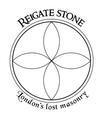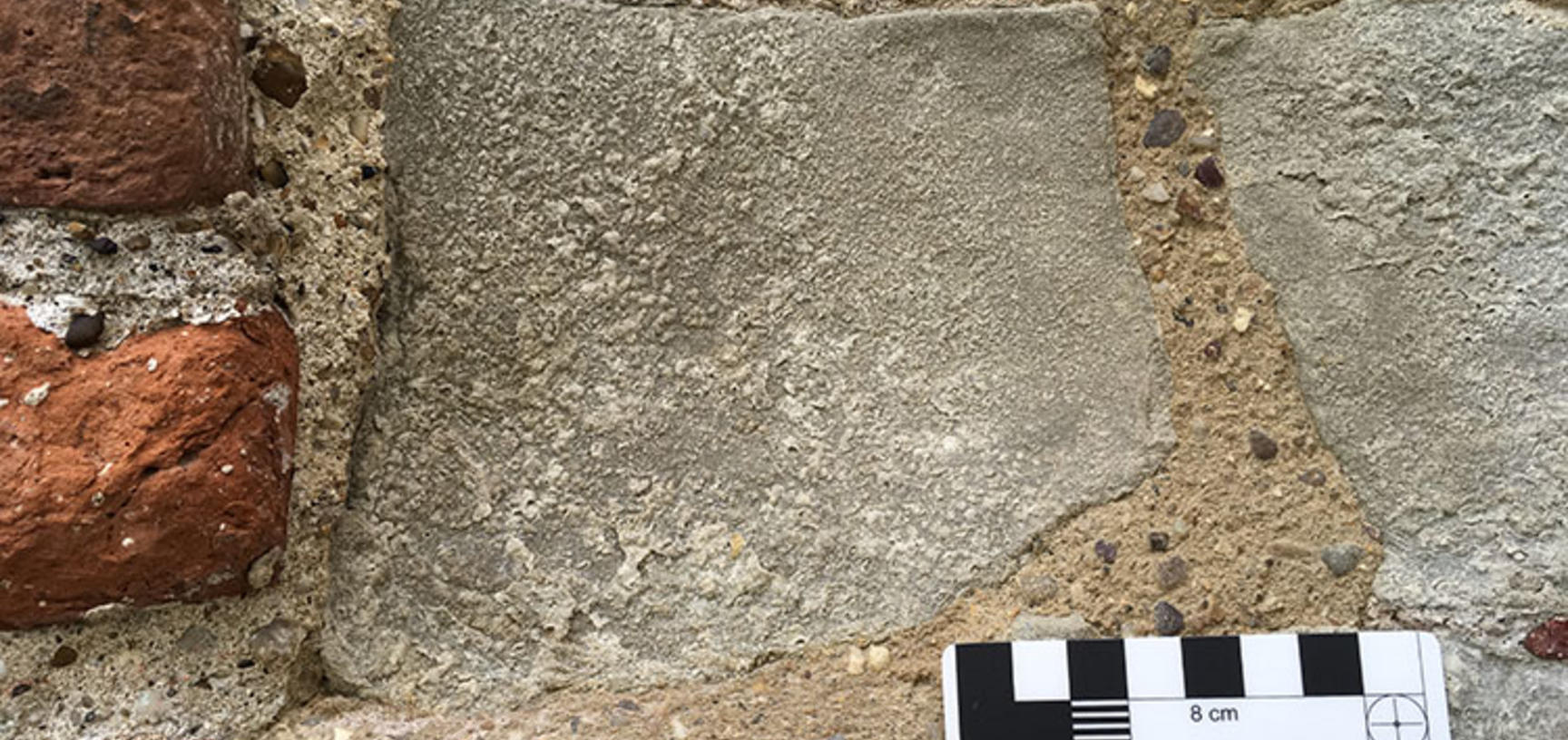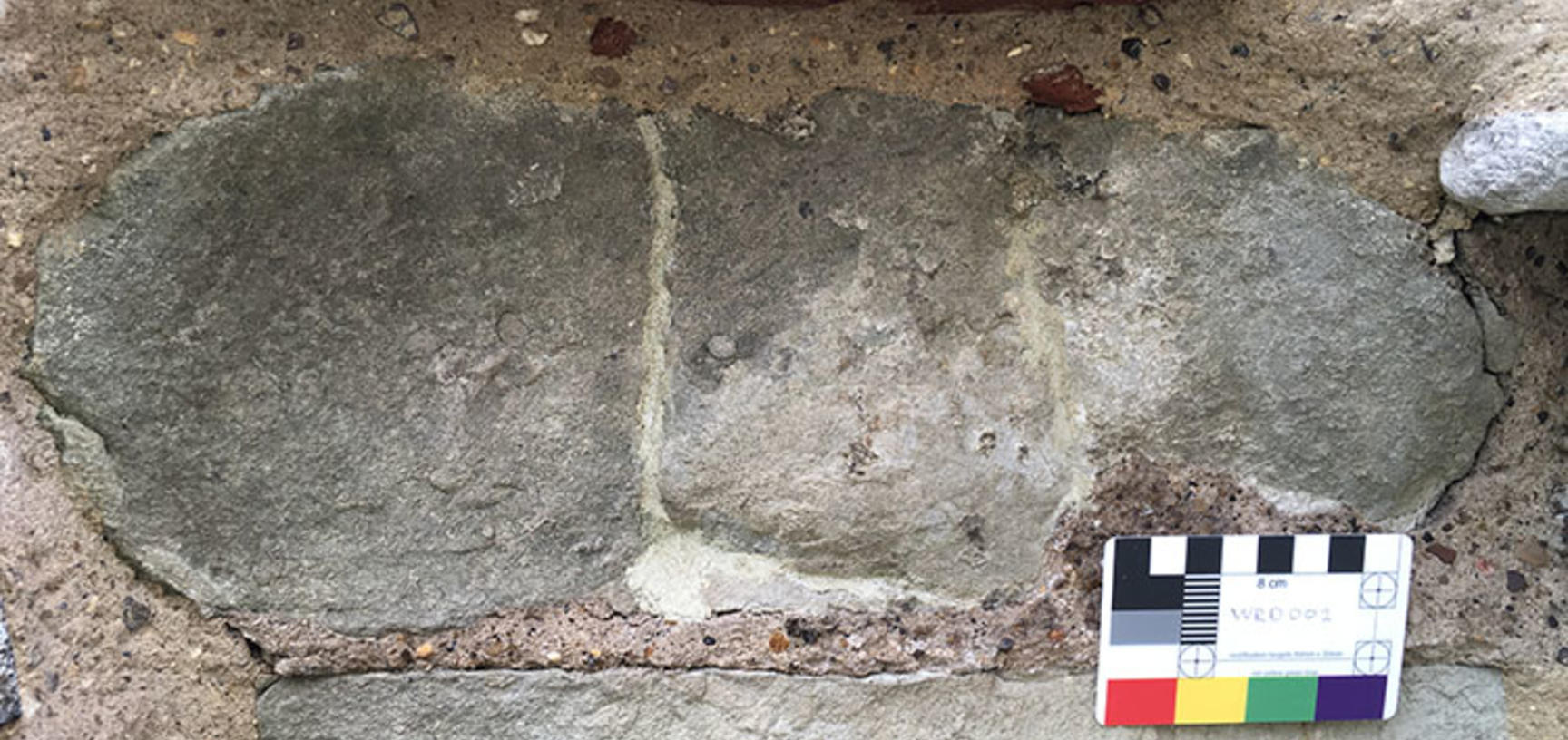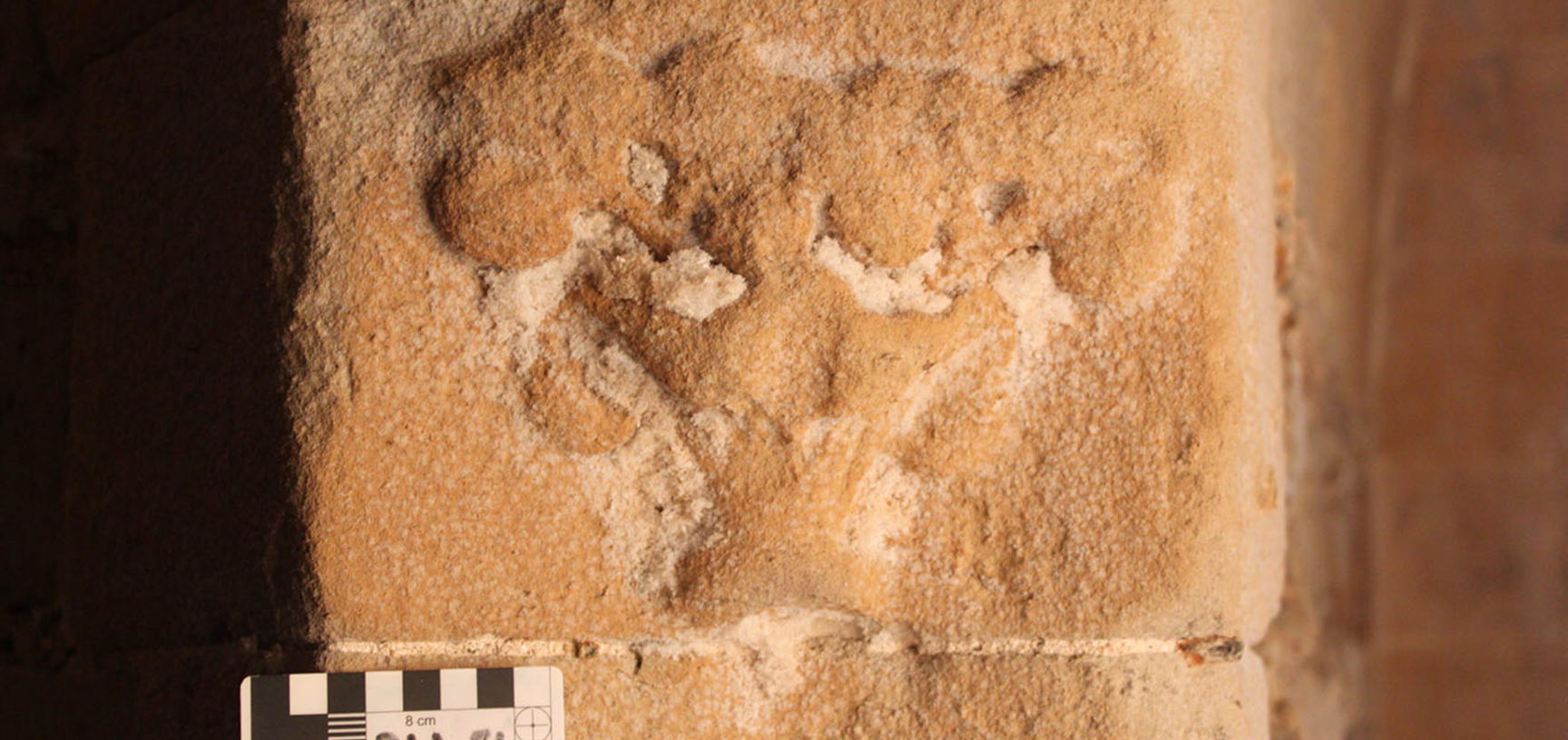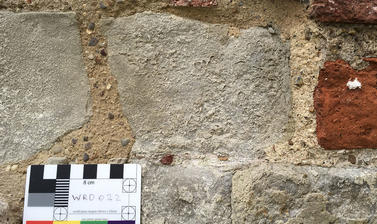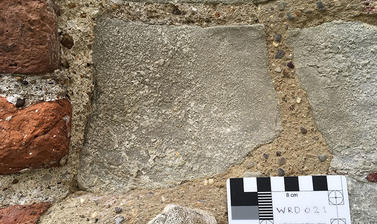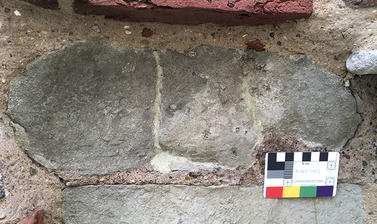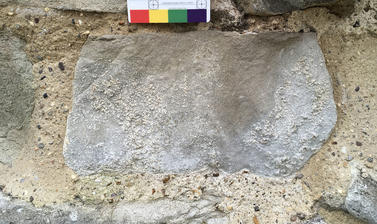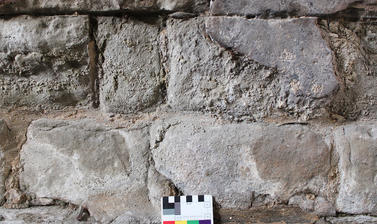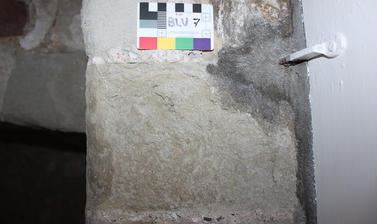Salt Crust
Occurence
Salt crusts can form on Reigate Stone surfaces in the presence of high salt levels. Salt contamination is common in Reigate Stone, particularly in exposed or low lying masonry. Salt crusts are likely to indicate recent or ongoing wetting and drying cycles.
Appearance
Salt crusts are very thin and generally translucent or very pale. They may be well adhered to the surface akin to an encrustation or peeling away as a thin film. They are also frequently prone to blistering.
In the absence of salt crusts, contamination is frequently visible in the form of efflorescence. In Reigate Stone, large salt crystals are often visible embedded in the stone surface, besides more typical cauliflower-like crystals formation.
Condition assessment
| Score |
Coverage (affected units in an area) |
|---|---|
| 1 |
There are no visible crusts in this area of masonry. |
| 2 |
There are remnants of crust visible. |
| 3 | There are small areas with crust either fully covering isolated stones, or remnants across several adjacent stones. |
| 4 | There are large areas with crust visible in this area of masonry, fully covering several adjacent stones |
Previous page (Black crust)
Next page (Detachment)

